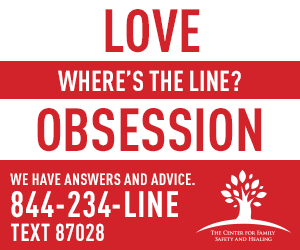First-Time Footsteps in Gangnam: Art Alleys, Boutique Avenues, and Midnight Singing Rooms
Life in Seoul’s south side carries a rhythm all its own. The moment a visitor crosses the Han River and steps into Gangnam, clear signposts of style and forward-looking design appear at every turn. Neon trim frames glass towers, pavement cafés spill conversation onto broad sidewalks, and speakeasy stairwells drop below street level into candlelit lounges. Yet beneath the polished veneer lies a collection of stories that reward patient discovery—stories that remain faithful to the district’s past even as it keeps setting tomorrow’s trends. A first visit gains depth once the traveler realizes that Gangnam is more than a shopping postcode; it is an ongoing dialogue between art, food and music. That conversation starts the minute the subway doors open at Sinnonhyeon Station and continues until the last karaoke chorus from https://gangnam-salong.com fades near dawn.
Street Style Meets High Fashion
On the surface, the eight-lane boulevard running from Gangnam Station to Sinsa Station resembles an outdoor showroom for international labels. LED façades loop seasonal campaigns, and shoppers drift in and out of flagships without glancing at price tags. To see how those glossy windows shape local habits, pause beside the diagonal zebra crossing on Teheran-ro just after dusk. Office workers shed jackets to reveal statement sneakers, and students adjust bucket hats below ring-light billboards that double as selfie mirrors. Around Apgujeong Rodeo, independent studios temper haute couture with humor—think jackets stitched with hanbok ribbon or leather totes printed with cartoon tigers. The mix proves that consumer culture here relies on subtle wit as much as spending power. Peeking into smaller ateliers behind the main drag often uncovers one-of-a-kind garments at prices kinder than expected, especially during weekday afternoons when foot traffic thins.
Coffee Breaks and Market Stalls
Retail therapy works best when fueled by caffeine, and Gangnam understands the ritual. Skip chain outlets and slip into the converted hanok on Dosan-daero where pour-over coffee drips through brass kettles. The store’s garden still keeps pomegranate trees planted by the previous homeowner, softening the modern skyline with organic red pops every autumn. A few blocks northeast, food carts pop up around Seocho Traditional Market from mid-morning, piping hot odeng broth scented with scallion meeting the bright zip of tteok-bokki sauce. Visitors afraid of stumbling through Korean phrases can rest easy; vendors accept tapping credit cards, and gestures carry most transactions. Watching office workers order lunch reveals an unofficial etiquette—queue loosely, greet the cook with a quick nod, step left to add green onion or extra gochujang, and always return the metal bowl to the water barrel. Local courtesy shines through such everyday gestures.
Gallery Rows and Public Sculptures
Beyond storefront glitter, art anchors the district’s civic identity. Horim Art Center on Seolleung-ro mounts rotating exhibitions of celadon pottery and modern ink, reminding viewers that Korean aesthetics value restraint and texture. Five minutes away, the smaller K-Space Gallery offers resident illustrators a platform to experiment with digital animation loops projected on floating scrims. These shows rarely charge admission, and attendants encourage questions rather than hushed silence. Art also decorates the sidewalk: stainless-steel orchids line Garosu-gil, while a whimsical bronze rabbit by sculptor Kim Young-won perches near Hakdong intersection, ears tilted toward passing buses as if eavesdropping. The result is an open-air museum that does not demand tickets or schedules—only a willingness to slow one’s stride and notice how public works interrupt the retail tempo.
Idol Culture Up Close
Gangnam’s links to K-pop stretch well beyond the song that made “Oppa” a household word worldwide. Management companies cluster near Cheongdam, and afternoon strolls sometimes reveal debut hopefuls practicing choreo in mirrored basement studios. Visitors can drop by SMTOWN & Store for limited-edition vinyl or head to the billboard outside HYBE Insight, where fans photograph their bias on birthdays. Yet the most memorable moments occur offstage: a quiet graffitied wall where trainees sign messages of encouragement, or the vending machine stocking peach soda emblazoned with cartoon likenesses of last year’s rookie group. For travelers who value authenticity over curated spectacle, these small finds paint a truer picture of the music industry’s ground level.
Breathing Room by the River
Amid commercial bustle, green space offers a counterpoint. Seonjeongneung, a UNESCO-listed pair of royal tombs, sits behind a hedge that muffles traffic into a distant hum. Tall pine and zelkova trees filter sunlight onto trim earthen mounds where Joseon kings once reflected on statecraft. Farther west, Yangjae-cheon stream carries clear water under bike bridges painted with lotus murals. Residents jog alongside reed beds at dawn, bowing politely as they pass walkers photographing grey herons. Even a brief circuit along this trail refreshes the senses before returning to city pace. Such pockets of calm remind newcomers that Seoul’s southern wards invest as much in livability as in commerce.
After-Dark Rhythm: From Rooftop Bars to Norebang
Night signals a shift from corporate formality to pure release. Craft-spirits lounges on Nonhyeon-ro swap playlists every hour, letting diners pair yuzu gimlet with funk or retro ballads. Rooftop bars crown low-rise blocks, their breezy decks framing city lights reflected in stemmed glasses. Yet the beating heart of Gangnam after midnight remains the karaoke lounge—noraebang in local parlance. Soundproof doors hide private booths clad in mirrored tile, each equipped with tambourines, mood lighting, and an endless catalogue spanning trot classics to Blackpink anthems. Groups rent rooms by the hour; staff deliver frosted beer towers and honey-butter chips without interrupting performances. First-timers might feel shy, but Gangnam’s unwritten rule applies: once the echo mic is handed over, courage earns more respect than perfect pitch. Leave self-consciousness at the threshold and accept backing vocals from strangers in the corridor—it is the fastest path to belonging.
Practical Matters Before Sunrise
Public transport keeps running until late, yet taxis remain plentiful for the final leg home. Apps display approximate fares upfront, and drivers usually understand hotel names in English. Portable Wi-Fi routers are available at the window beside exit five of Gangnam Station, making digital translation a breeze. Dress codes lean casual, though bar patrons appreciate neat appearance; sneakers are fine if clean. Most venues welcome visitors year-round, but May and October offer mild evenings ideal for rooftop seating without heavy coats.
Final Impressions
Stepping back across the Han after a full day reveals how Gangnam packs many facets into compact blocks: commerce, artistry, heritage, and a love of shared song. A first visit grows richer when one balances premium shopping with gallery walks, riverbanks, and late-night karaoke refrains. The district rewards curiosity and a willingness to stay out slightly later than planned, because its pulse thrives between the last subway announcement and the first sunrise commuter train. Once those rhythms sink in, Gangnam ceases to feel like a postcard and begins to feel like part of the traveler’s own story.



Leave a Reply
Want to join the discussion?Feel free to contribute!